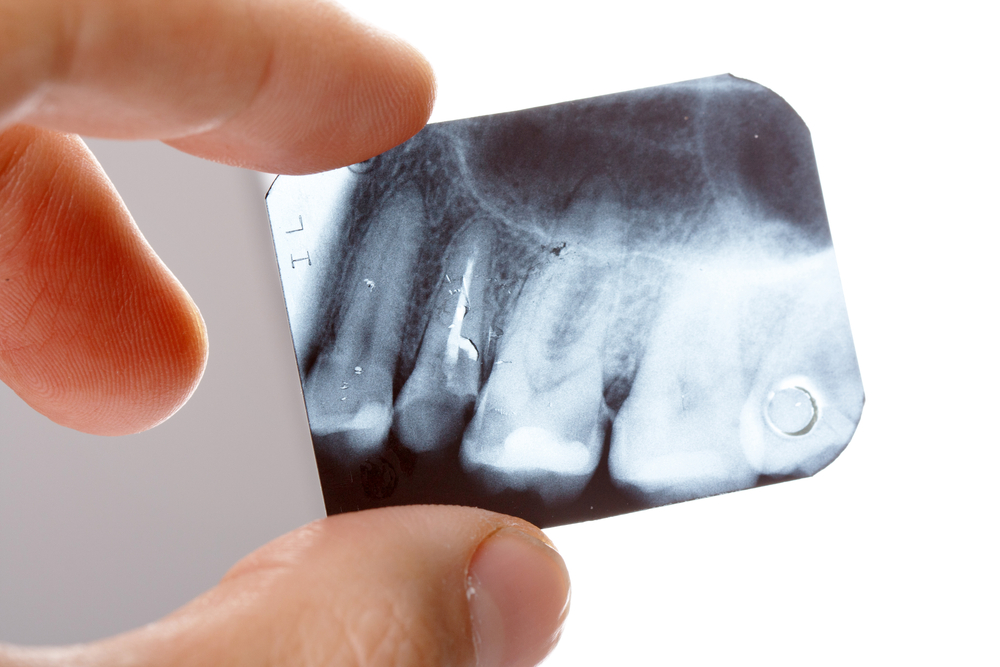Dental X-Rays Linked to Increased Brain Tumor Risk

People who've had frequent dental X-rays may have an increased risk of developing meningioma, a type of brain tumor, new research suggests.
People in the study with meningioma were twice as likely as tumor-free individuals to report ever having a "bitewing" exam, which requires a patient to bite down to hold an X-ray film in place while a device photographs a portion of the mouth.
While the study suggests an association between dental X-rays and risk of meningioma, it doesn't show the radiation actually causes brain tumors, researchers said. Moreover, the cancer remains rare — about 6,500 people are diagnosed with meningioma yearly in the U.S., according to the University of California, Los Angeles.
The researchers also pointed out that the study looked at X-rays performed in the past, when dental radiation exposure was greater than it is now, because of new guidelines and technology.
Still, "if there's a potential that extended exposure to dental X-rays is associated with meningioma risk, and this risk can be moderated by fewer screenings, then I think there's an important public health interest here," study lead author Dr. Elizabeth Claus, a professor of public health at Yale University, told MyHealthNewsDaily.
Meningioma risk
Meningioma is a noncancerous tumor in the protective linings of the brain and spinal cord that can cause blurry vision, seizures and loss of coordination.
Sign up for the Live Science daily newsletter now
Get the world’s most fascinating discoveries delivered straight to your inbox.
The causes of meningioma are not well-understood, but the most consistently identified environmental risk factor is exposure to ionizing radiation, which includes radiation from atomic bombs and radiation therapy.
Dental X-rays are the most common artificial source of ionizing radiation, Claus explained, adding that previous research has suggested a link between the brain tumor and dental X-rays, but those studies were small, involving at most a few hundred participants.
In the new study, Claus and her colleagues interviewed 1,433 people who were diagnosed with meningioma between 2006 and 2011. They also spoke with 1,350 people who didn't have condition, but were similar to the meningioma patients in terms of age, sex and where they lived.
In a questionnaire, study participants reported how often they received bitewing, full-mouth and panorex films (which are taken from outside the mouth) during four periods of their lives: younger than 10 years old, between ages 10 and 19, between ages 20 and 49 and older than age 50.
"A fair number of people said they got X-rays every six months in the past; most commonly, they were getting it every year," Claus said. The American Dental Association guidelines suggest children get X-rays once every 1 to 2 years, teens every 1.5 to 3 years, and adults every 2 to 3 years. "It's clear that many people were not aware of the guidelines."
The researchers found that people who had bitewing exams done on a yearly basis or more often when they were younger than 10 years old were 1.4 times more likely to get meningioma than people who never had the exam during those years. This risk jumped to 1.9 for those getting the exams done yearly between ages 20 and 49.
They also found an elevated meningioma risk with panorex exams — patients who ever received such films when younger than 10 years old had a 4.9 times increased risk of the brain tumor compared with those who didn't get the x-rays. Fewer patients in the study reported receiving these exams, compared with those who reported receiving bitewing exams.
Cost-benefit analysis
Dr. Keith Black, a neurosurgeon at the Cedars-Sinai Medical Center in California who was not involved in the research, said he was impressed with the breadth of the research and that the findings fit nicely with those of previous smaller studies. A lingering question, however, is "whether there's an increased risk in the pediatric population," he said.
It may be the case that children have an increased risk of meningioma compared with teens and adults. "Children's tissues are thinner than adults," Black said. "Also, their cells are dividing more rapidly, and can be more easily damaged by X-rays."
People should carefully weigh the risks with the benefits of getting dental X-rays, which can spot such issues as decay, gum disease and oral abscesses, said Black, who's declined getting routine dental X-rays for more than 20 years.
Claus said she is concerned that patients and maybe even some dentists don't know the dental X-ray guidelines.
"We need to just get the word out and make people aware of the guidelines and talk with their dentists about it," Claus said.
The study is published today (Apr. 10) in the journal Cancer.
Pass it on: Frequent past exposure to dental X-rays is associated with an increased risk of developing meningioma.
This story was provided by MyHealthNewsDaily, a sister site to LiveScience.










